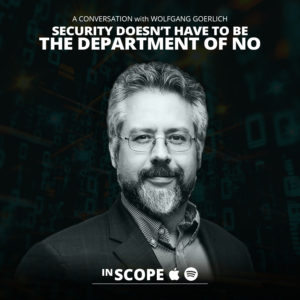Everyone has a pandemic story. Here’s mine.
Before the lockdowns, before we were all wearing masks, before travel ground to a halt, I was in Switzerland. It was a good time: I had a presentation to give about securing DevOps, and after a couple of days at the event, I took my wife on a rail trip around Europe. We were celebrating the completion of her recent book manuscript, which she had submitted to her publisher on our way out of town. Our plan was to travel through mid-March.
Then we got the call. We were in Budapest. My employer telephoned to say that there was a travel ban going into effect on midnight, March 13th. With very little notice, we returned to our hotel, threw our clothes into suitcases, rushed to the train station, and we took an overnight train to Prague. By the time we got to Prague, they had an idea of how to get us as far as Paris. So we took a flight to Paris. We landed in Paris and there was bedlam. Everyone was trying to get off the continent. Somehow? We were able to get the very last seat on the very last flight to the States. We made it home two hours before the travel ban.
After that, everything shut down. We did our part. We saw the risks and did our part to bend the curve. A month went by, then three months went by, then six months went by. And each time I was preparing for events, certain that things would reopen in a couple of months. Surely this was going to end. Surely this was going to wrap up.
And a weird thing happened to me. After watching the Covid numbers day in and day out, I found myself very habituated to the risk. After waiting for months, even though the numbers were frankly worse than they were in the beginning of the pandemic, I figured the risk must have subsided. Surely there was no longer a monster outside of our cave. It must have wandered away by now, right? There’s no way that we are still in danger. The caveman brain in all of us does curious things when it comes to risk management.
That sense, that nagging sense, that cognitive dissonance, that tension between logically knowing the risks but emotionally feeling everything must surely be fine, that led me to study how risk was being managed and communicated during the pandemic.
I’ve been the person providing numbers to the executive team from my security team. I’ve been the one to explain, “I know the numbers are the same and I know everything feels like it should be okay, but we really are in a bad spot.” But the pandemic gave me the experience of the other side: hearing the numbers and struggling to interpret the data to make informed decisions. There’s a great deal of overlap, I believe, in these two domains, cybersecurity and healthcare.
What can we learn from behavior science and from the psychology of our shared experience over two years? How can we take these lessons back to cybersecurity?
On the two-year anniversary of taking the last flight home from Paris, I’m going to look at risk management in a blog series. I’ll detail some of what we learned in the pandemic about how people process risk. I’m going to share here with you in the hopes that collectively, as information security and risk management practitioners, we can learn something about the nature of human psychology and thereby do a better job at protecting our organizations.
This is part one of a nine-part series. I welcome any and all feedback. Let’s learn together.


